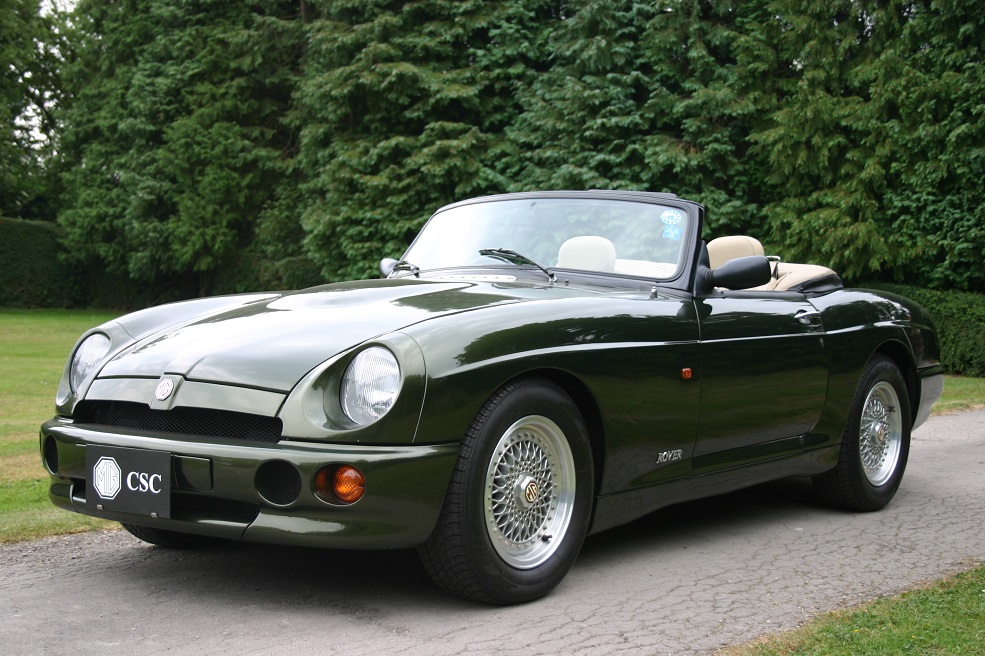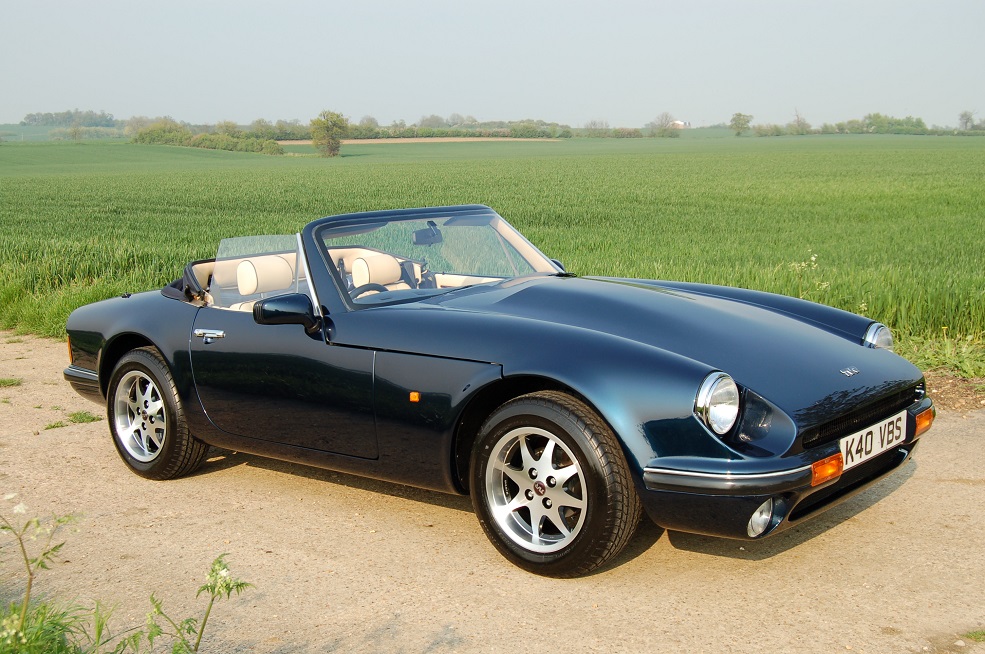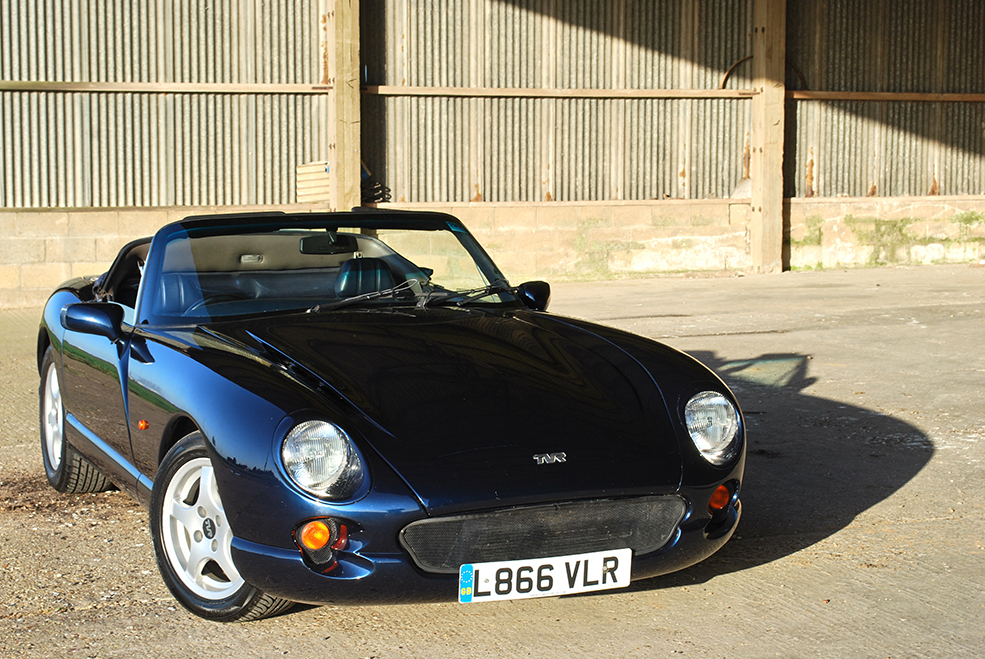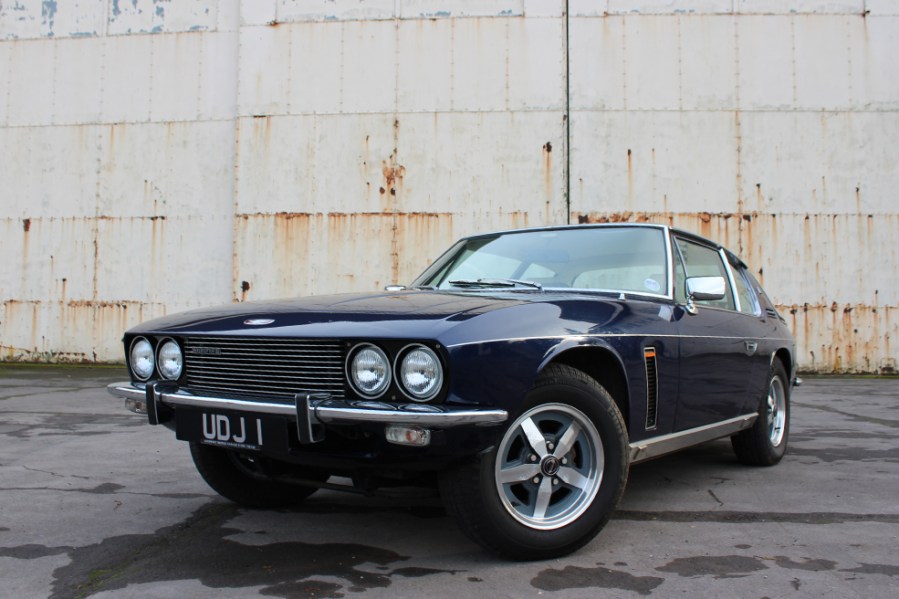Some of the very best British classics were powered by V8 engines. Here are our favourite examples of the breed
Words: Joe Miller, Matt Bell
Jensen Interceptor
After years producing fiberglass-bodied cars, the Interceptor would be a return to all-steel for Jensen. The body was designed by Carrozzeria Touring and initially built by Italian Vignale before Jensen took assembly in-house. The result was a stunning coupe, with American muscle-esque menace and a teardrop profile completed by a glass rear canopy.
The engine only added to the allure, too – rather than a British V8, Jensen made use of a Chrysler-sourced 6.2-litre V8 that produced an almighty 325bhp and a meaty rumble. From 1971, two variants of Chrysler’s 440 cubic-inch (7.2-litre) V8 were offered, with as much as 330hp in triple-carb SP form, but even the least powerful Interceptor had oodles of lazy torque and a V8 soundtrack to die for.
To drive, it steers as vaguely as you’d expect a massive car that often came equipped with the wrong steering rack to do, and the suspension favours comfort over cornering. However, the V8 power and surprisingly light kerb weight mean the Interceptor accounts for itself well, handling flowing country roads with decent composure. The grip was particularly impressive in the 1967 FF model, the first four-wheel drive road car.
Inside, the Interceptor was well equipped, offering electric windows, a radio with twin speakers and an electric clock, plus power steering as standard by 1968. The Jensen is also the biggest car here, granting it a capacious cabin, the biggest back seat and a cavernous boot.
The Jensen can’t offer nearly the parts support of the Jaguar, but there are the likes of Martin Robey to come to the rescue. The club movement is also the smallest three cars here, and coupled with the Interceptor’s notorious complexity to restore, means owning an Interceptor often a frustrating and expensive commitment.
It does score on price though – cheap examples needing restoration can be money pits, but a good example starts at around £30,000, with even the very best Jensen Interceptors rarely breaking £60,000. It’s the hardest to own and arguably the outsider in this comany, but it does have a massive engine and arguably the best name ever given to a car.

Aston Martin V8
Replacing the DB6 and initially launched as the DBS V8, Aston Martin’s flagship was officially denoted ‘V8’ by 1972. Powered by a 5.3-litre V8 fed by either carburetors or Bosch fuel injection depending on which series car you’re looking at, the V8 was a caddish GT to make the six-cylinder E-Type suddenly look quite feeble. Muscular and torquey, the V8 produced over 300hp in its least powerful guise with low down grunt, accompanied by a gorgeous deep burble. This big GT also offered up supercar-worrying performance; indeed, the 1977 Vantage was powerful enough to be the fastest production car in the world from 0-60mph.
Despite almighty performance though, the V8 was still classy stylistically, with sweeping curves, minimal body adornments and only a small bonnet scoop to feed the V8, replaced in the 1978 Oscar India spec for a discreet power bulge. Inside, the Aston was every inch the British luxury car, with acres of wood and lashings of soft leather.
The V8 was described as a saloon and offered a small back seat as well as ample boot space. Where the Jaguar had desperately tried to become a GT car, the Aston was designed as one from the outset and accordingly, was comfier, roomier and more practical. The Aston unquestionably suits the sporting GT description better than the Jaguar, which reflects in the values today – even a non-Vantage spec V8 will cost close to £100,000 for a good example, £130,000 for the best. It’s undoubtedly one of the best British V8 cars ever produced.

Morgan Plus Eight
The Morgan concept was well-established by the mid 1960s: take a British sportscar shape that originated in the 1930s, put a well-proven engine into it, then stand back and watch the order book demolish as many forests as the wooden body frames required. A simple tactic for a simple car with a simple appeal.
The Plus Eight was created to the same formula – albeit by widening the chassis by four inches to accommodate Rover’s 3.5 litre V8. The model was so popular that even in the new millennium, production ceased with a full order book. The engine grew bigger over the years, sprouted electronic injection, but fundamentally the Plus Eight adhered to the same design ethos at the end of its production life as it had back in 1967.
And unsurprisingly values are strong even now. The last couple of years have seen a general increase, but a meteoric rise for the very best examples which is influencing a slightly less even market than before. An all-new BMW-engined followed from Morgan later but has since been discontinued; as great as it was, it lacked some of the wooden-frame, British V8 charm of the original.

MG RV8
MG was on its way back with the F by 1995 – but hadn’t yet got the car ready to go. As the brand had been dormant since 1992 and hadn’t produced a sports car since 1980, something was needed to pre-empt the new MGF and get the marque back into public consciousness. As luck would have it, British Motor Heritage was just starting to produce new MGB shells – and a project which utilised these could be a very clever way to promote both the brand and the new venture with a new-yet-old British V8 sportscar.
The RV8 therefore was effectively a vastly updated MGB – the most famous of the British sports cars – to be produced as a limited run Heritage project to revive interest in the MG brand. Interestingly, you could almost view the TF LE500 as a similar project a decade and a half later. Range Rover mechanicals and MGB commonality mean that keeping an RV8 on the road is a simple task today, and they attract a diehard band of followers who can consider nothing less.
This appeal means values have always stayed higher than the original BGT V8 was – though cars which were perhaps £15,000 five years ago are now fetching much more than that. This is a rising trend, making the RV8 a prime candidate for investment if you can find a good one.

TVR V8S
The TVR S was the last in a long line of traditional TVR British sports cars – developed from the 3000S of 1979 as an entry level model and introduced in 1986, the S was intended as a Ford V6-engined entry level model to take the place of the Tasmin as the Wedge moved upmarket. By 1991, though, as TVR centred its range around Rover’s V8, the S was given that engine as an entry model to sit below the new Griffith.
When production made way for the Chimaera, TVR entered a new and forward-thinking phase in the marque’s development and the final links with the days of the M series and the Taimar were severed. British sports cars
Values for this “softer” TVR have never reached those of the Wedge. We’d hesitate to buy a V8S for investment purposes right now, but it’s worth keeping an eye on the market for future developments.

TVR Chimaera
Closely related to the excellent Griffith, the TVR Chimaera was a softer-edged take on a similar British V8 sports car recipe. Power came from a familiar Rover V8 that was available in various displacements and power outputs during the course of the car’s long production run. All were very fast, with even the entry-level 4.0-litre model managing the 0–62mph sprint in just 5.1 seconds.
When it comes to value for money, there’s not much to complain about with the Chimaera in today’s market. For a fraction of the cost of a Porsche 911 of a similar age you get a car that’s faster, easier to work on and – arguably – nicer to listen to.







